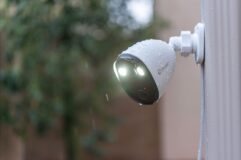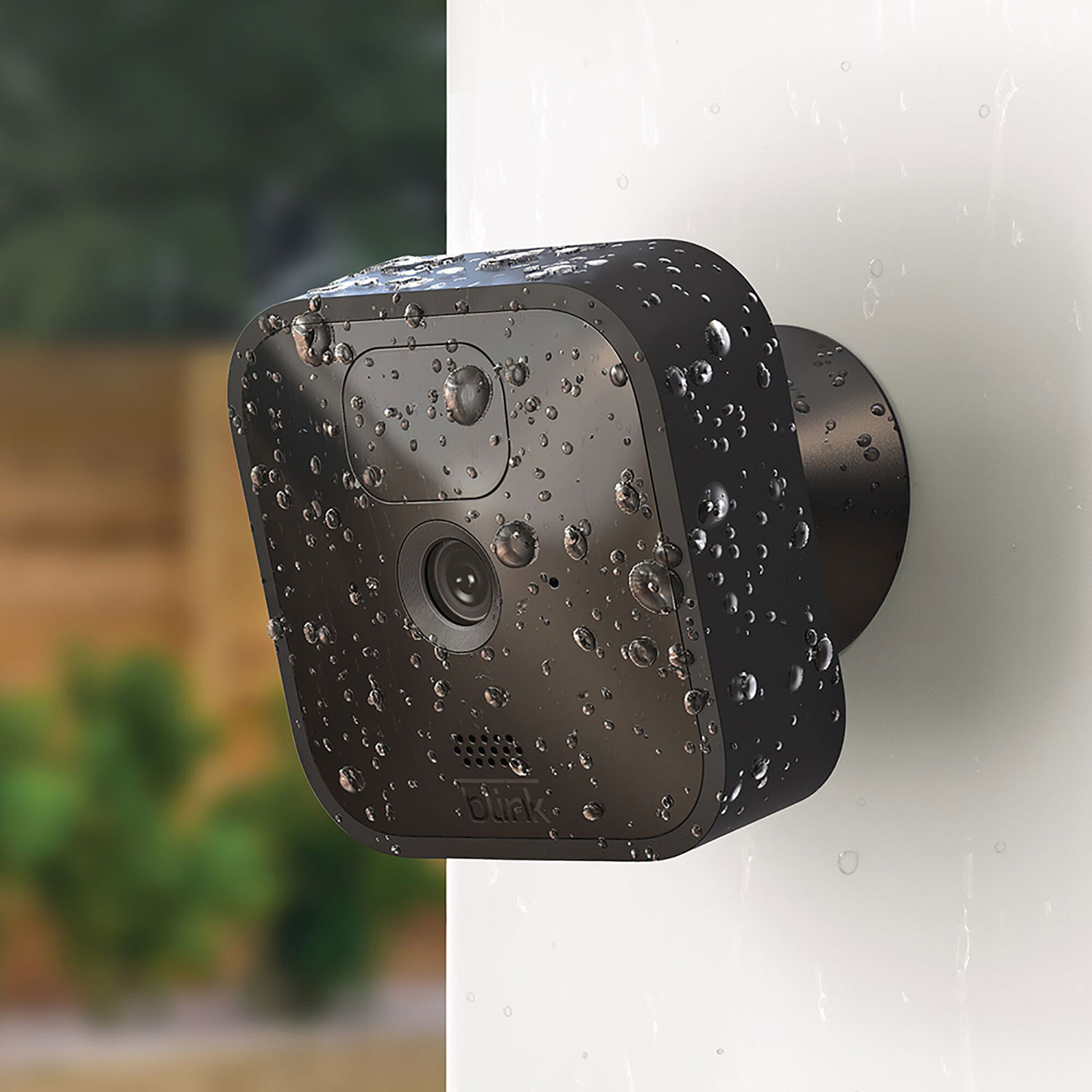
One of the best reasons to build a smart home is to create your own security and access setup—all controlled on your smartphone. Security cameras offer peace of mind knowing you can record activity day and night and remotely get a live view of your home. Plus, you can set it up yourself on a weekend.
There is no shortage of smart home security cameras to choose from; wireless cameras, semi-wireless cameras, wired cameras, indoor security cameras, and outdoor security cameras. I’ll break it all down, so you know which camera is right for you. I’ll also discuss the power and video storage options, especially if you’re looking to avoid cloud fees. Finally, I’ll discuss some of the popular brands to help you choose between all the different available options with helpful tips and tricks.
Wired vs wireless security cameras
To start, let’s differentiate between wired and wireless security cameras. Many people get this confused because many cameras have wired power connections with a wireless connection to the internet. Conversely, some camera systems are completely wired and others are completely wireless. Let me explain the differences in more detail.
Wired security cameras
By definition, wired security cameras have a physical wired connection. At a minimum, this is to power the camera. However, the wired connection can also transmit video footage to a Digital Video Recorder (DVR). These cameras typically come in a kit with 4 or more cameras. The benefit here is you don’t have to worry about batteries or outdoor Wi-Fi signal strength. The video capture by the camera is instantly recorded to a DVR. You gain the advantage of on-site storage of the videos and never having to charge camera batteries. However, the installation of a wired camera system requires planning and proper handling of the wiring. A good tip when preparing to do this kind of installation is to work back from the DVR location and ensure you have enough wire for each camera location.
Semi-wireless security cameras
Semi-wireless security cameras have wired power sources with wireless, Wi-Fi connectivity. This is a great choice if you have a power source near the location you want your camera. Once set up the camera, you never have to worry about recharging the battery because the camera has a constant power source. However, you will need a good Wi-Fi connection where the camera is placed. For this reason, many indoor security cameras offer semi-wireless security cameras. Most indoor locations have a variety of power outlets available and a strong Wi-Fi signal. This type of security camera is also a good choice for smart doorbells, especially if your existing doorbell has a wired power connection. Finally, homeowners can replace existing powered flood lights with a smart floodlight cam. In all three scenarios, these cameras use existing power sources but rely on Wi-Fi to transmit footage.
Wire-free security cameras
If no power source is available where you would like to install a new camera, then wire-free security cameras are for you. These cameras rely on battery power and Wi-Fi to operate. Because they can be placed almost anywhere, Wi-Fi signal strength becomes the main setup concern. You will need a strong, reliable Wi-Fi connection, especially for outdoor setups. Thankfully, there are a host of Wi-Fi and networking products that will help you extend the coverage of your Wi-Fi. This networking buying guide is a great place to learn about all the available options to improve Wi-Fi for wireless security cameras.
The benefit of wireless security cameras is easy installation because no wires are involved. However, the batteries need to be occasionally charged. The exact frequency for recharging will depend on how often the camera is used. Some wireless systems have accessories like solar panels to keep cameras charged. This is a great investment if you want to avoid battery maintenance.
Video storage options
When choosing smart security cameras, pay special attention to the video storage options. Many cameras offer cloud recording, at a price. After a free trial, users pay a subscription fee. You can opt out, but the camera’s features are typically limited to live views without any recording. For example, you may get a notification of motion detection but no cloud recording of the event. Most brands offer different plans depending on the number of cameras you have.
There are security camera options available for people looking to avoid paying monthly or annual subscription fees. Some cameras have a micro SD card port. This lets you store footage on your own memory card and access with wirelessly. Other wireless systems have base stations with a USB port to attach a portable hard drive. This is another great way to avoid cloud fees.
Popular home security brands
Some of the more popular security camera brands are Google, Arlo, Blink, and Ring. Each offers a range of semi-wireless and wireless cameras. A good tip is to stick with one of a few brands. For example, if you already have Google smart speakers or displays, for example a Google Nest Hub, then Google Nest Cams are a natural fit for your home. Another tip is to find a brand that will allow you to meet a variety of security needs: select a brand with the right combination of camera types and accessories so you have the flexibility to expand over time, without having to add another brand (and another app) to your setup.
Defender is a great choice for dedicated wired camera systems. They also offer Semi-Wireless systems. This is a good brand choice if you want to build a hybrid home security system consisting of wired, and semi-wireless systems. Again the advantage of sticking to one brand is having all the cameras available on a single app.
Building a smart home security system
The best place to start a smart home is with smart home security. There are many cameras available but there are important considerations. First, assess your power situation. Do you have power nearby? If you do, consider a Semi-Wireless Camera. You’ll never have to worry about charging the batteries.
If you don’t have power, choose between a wired or wireless camera system. Wired cameras take longer to install and they involve running a lot of wire around your home. But you’ll never have to pay for cloud storage, and still have convenient access to the stored footage from anywhere using your mobile device. Wireless cameras are battery-powered—they can be placed almost anywhere you have Wi-Fi. However, battery maintenance will be an issue. Consider a brand that offers solar panels if you want to avoid charging the batteries regularly.
Finally, pay special attention to the available storage options. You need stored footage to identify visitors to your home (both the welcome and the unwelcome kinds!). Some brands only offer paid cloud subscriptions after a limited free trial. Without it, users only get motion detection alerts and live viewing. Other brands offer the ability to use micro-SD cards and portable hard drives. If you don’t want additional fees, storage options become the most critical factor in your camera decision.
To get started, read this smart home security buying guide. It will help you decide which security brand and cameras are right for your particular needs. Ask questions in the comments below for additional home security assistance.








There is no better protection from hacking, and high resolution capabilities than a wired surveillance system. Wireless systems are ideal, when a wired system is not feasible.
Comments are closed.